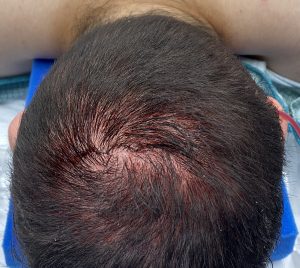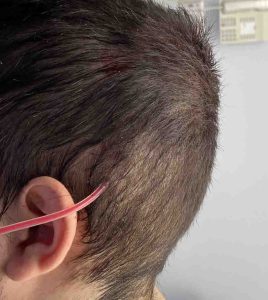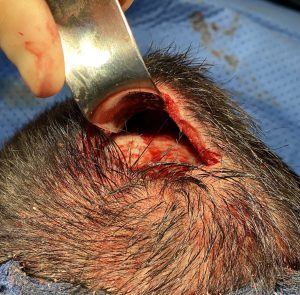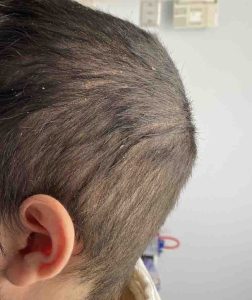Background: One of most common requests in skull reduction surgery is that for protrusions on the back of the head. Whether it is smaller projections like an occipital knob to larger ones like an occipital bun, the back of the head in profile view takes on great aesthetic significance particularly in the shaved or short haircut male.
While often called occipital reductions that is a bit of an anatomic simplification in some cases. The occipital bone does involve midline knobs and bun projections, but any excessive projection above the lambdoidal suture is technically not the occipital bone but involves the posterior parietal bones as well. Between the inferior occipital and the more superior parietal bones, the entire back of he head can be enlarged which requires a reduction of both outer bone surfaces.
The key question in any skull reduction procedure including the back of the head, is how much reduction can be achieved. By definition safe skull reduction surgery means removing the outer cortex of the skull down into or close to the very thin diploic space. This leaves the inner cortical table as a safe buffer. Determining whether removing the outer cortex of the skull is enough can be judged by a plain lateral skull x-ray. Fortunately the back of the head, particularly the occipital bone, has the greatest thickness of the entire skull and affords the most skull reduction possible.
Case Study: This young male desired to have a back of the head prominence reduced. His CT scan showed that at last 5mm of reduction was possible, particularly at the lambdoid suture and below over the entire occipital bone.


The most important aspect of any skull reduction surgery are three issues; 1) how much reduction is possible, 2) does the amount of reduction possible coincide with achieving adequate improvement from the patient’s perspective and 3) is the scalp scarring from the scalp access needed to do the skull reduction a worthy tradeoff. These are three issues that need to be thoroughly reviewed before surgery. The question with skull reduction is never whether it can be done…but whether the changes achieved are enough to justify the surgical effort.
Case Highlights:
1) Back of the head skull reduction is limited to outer cortex bone removal whose amount can be determined by preoperative x-ray studies.
2) A limited scalp incision of 6 to 8 cms, whether it is placed high or low, is enough access to adequately complete the skull reduction.
3) While such skull reduction is not minor surgery the recovery from it is fairly quick with a low level of postoperative discomfort.
Dr. Barry Eppley
Indianapolis, Indiana






